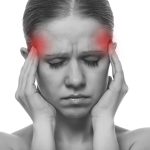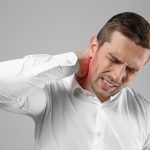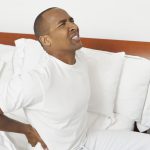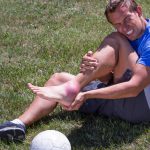Conditions
Head

Headaches
It’s all in the name; a Headache is pain anywhere in the head or face. There are several types of headaches, each with different causes and symptoms. Three common types of Headaches however are: Tension Headaches, Migraines and Cluster Headaches. Pain can stem from various areas around the head, including nerves in the face, mouth, throat and scalp, muscles near the head, neck and shoulder and finally blood vessels around the brain. Headaches can also be caused by other underlying health disorders, such as neurological disorders.
Headaches
This type of headache is probably the most common. Tension Headaches are usually caused by stress, strained muscles, lack of sleep, hunger or eye strain. People usually report feeling pain on both sides of their head with a bit of pressure. These headaches can almost always be helps with over-the-counter meds, such as Tylenol or Ibuprofen. Like any headache though, these can also be caused by other health issues.
Migraines
A Migraine is a much more severe type of headache and is usually accompanied by many more characteristics than that of a tension headache. In addition to pain, a Migraine is also associated with the following symptoms: nausea, vomiting, sensitivity to light, lightheadedness, and intense pain or throbbing on one or both sides of the head.
We have two nerves located at the back of our head, called the Greater Occipital Nerves. Both originate from upper cervical nerve roots, coming up through the back of our head, intertwining with muscles at the back and top of our head.
When one or both of the Greater Occipital Nerves are irritated, inflamed, or compressed, it can cause numbness, tingling, electrical shooting, and pain at the back and/or top of the head. Some of the symptoms mimic a migraine, so often Occipital Neuralgia and Migraines get misdiagnosed.
Migraines
When one or both of the Greater Occipital Nerves are irritated, inflamed, or compressed, it can cause numbness, tingling, electrical shooting, and pain at the back and/or top of the head. Some of the symptoms mimic a migraine, so often Occipital Neuralgia and Migraines get misdiagnosed.

Neck
Neck Pain
Over the course of our life we have many contributors that point to Neck Pain. It doesn’t just happen to those who suffer auto accidents and traumas, Neck Pain can also be the result of disc degeneration, bad posture, bone disorders and other repeated stresses that we subject our bodies to daily.
The Cervical Spine consists of seven vertebral discs, C1 through C7, these are 7 out of the 24 vertebral discs that make up our spinal column. The nerve root passes from the brain down through the spinal canal, the vertebral structure that protects the nerve root. If at any point the vertebral bones in our cervical spine become weakened, fractured, broken or suffer a bone spur, this can put pressure on the nerve root, causing pain and/or numbness and tingling in any of the following areas: head, neck, shoulders, arms, and hands.
There are several diagnosis associated with Neck Pain, including but not limited to the following: Muscle Strain, Nerve Compression, Spondylolisis, Osteoarthritis and a Herniated Disc.
Cervical Spondylosis
This can occur at any level in the spine. When the spine begins to degenerate, whether it is because of osteoarthritis or a bone disease, Spondylosis begins to form. The breakdown of the vertebrae, including bone spurs and disc degeneration are what we call Spondylosis.
Neck Muscle Strain
Muscle Strains or Pulled Muscles in the neck are the result of a pulled tendon or muscle. They usually occur as the result of our routine daily activities, including sports, lifting, bending, twisting, pushing and pulling and bad posture. The reported symptoms typically associated with a muscle strain in the neck area are spasms, burning and tenderness.
Nerve Compression can occur anywhere in the spine, beginning at the Cervical Spine, down to the Lumbar Spine. There are several factors that can cause a nerve to become compressed, a common one being Osteoarthritis, which is the result of normal wear and tear through aging. Other conditions that may cause a Nerve Compression are a Herniated Disc, Spinal Stenosis, a bone spur, and trauma or injury to the spine. Symptoms may include pain, numbness and tingling, muscle weakness, a burning sensation, and foot drop.
Nerve Compression
Nerve Compression can occur anywhere in the spine, beginning at the Cervical Spine, down to the Lumbar Spine. There are several factors that can cause a nerve to become compressed, a common one being Osteoarthritis, which is the result of normal wear and tear through aging. Other conditions that may cause a Nerve Compression are a Herniated Disc, Spinal Stenosis, a bone spur, and trauma or injury to the spine. Symptoms may include pain, numbness and tingling, muscle weakness, a burning sensation, and foot drop.
Shoulder

Rotator Cuff Tear
A group of muscles and tendons that surround the shoulder joint are what make up our rotator cuff. When the rotator cuff sustains a tear which can happen as a result of injury, overuse of the shoulder, i.e. playing overhead sports such as tennis or basketball, or just normal wear and tear through aging and/or arthritis, it can be very painful. Some common symptoms of a tear might include: pain in the shoulder, more severe pain with certain activities, limited range of motion, muscle weakness and cracking and popping sounds with movement.
Shoulder Bursitis
Bursa sacs are located at all the major joints; including but not limited to the shoulder, elbow, hip and knee. Each sac is filled with fluid (synovial cells) and is instrumental in aiding joint movement by acting as a cushion to help the joints glide without causing friction. When the bursa sacs become inflamed, torn, ruptured, or entrapped, it can cause pain, tenderness, limited range of motion, swelling and redness.
Rotator Cuff Tendonitis
Rotator Cuff Tendinitis is also referred to as Shoulder Impingement Syndrome. This put simply means that there is pain and swelling of the cuff tendons and the surrounding bursa (the fluid that sits just below the acromion and above the cuff tendons. There are many causes for rotator cuff tendinitis, including overuse of the shoulder; wear and tear over time, bone spurs on the acromion, injury, not stretching properly prior to exercising and overuse. Symptoms may include:

Wrist and Hand
Trigger Finger
Tendons in the fingers and thumb that connect the muscles to the bones are what permit flexion and extension at the fingers and thumb. Each tendon is covered by out outer protective layer of tendon sheath (made up of synovial membrane). When the tendon sheath becomes inflamed it makes it difficult for the tendon to perform movement under it, sometimes causing nodules (lumps) where the tendon meets the inflamed area. Imagine that string inside most hoodie sweatshirts that allow you to tie it tight around your neck; when the string gets stuck inside that small tunnel of fabric it’s comparable to the nodule we refer to.
The nodules and inflammation can cause pain, and eventually lead up to Trigger Finger, when the finger and/or thumb get stuck in a bent position, for short or long periods of time.
Trigger Finger
Compression of the median nerve at the carpal tunnel (where bones and ligaments form a small tunnel at the wrist on the palm side) is what causes Carpal Tunnel Syndrome. There are several conditions that can cause the entrapment of the median nerve, including repetitive hand and finger movements (like typing), fractures or breaks, bone disorders (like rheumatoid arthritis) and other underlying health issues. Reported symptoms typically include numbness and tingling at the wrist, thumb and certain fingers, a burning sensation, weakness and pain.

Back
Low Back Pain
Nearly 80% of all Americans will experience back pain at some point in their life, that’s right, 8 out of 10 people will suffer back pain. There are several causes to back pain, the most common being a muscle strain or sprain. Back pain is classified as Acute and Chronic, acute being for a brief period of time and chronic meaning ongoing suffering. There are several factors associated with back pain, including but not limited to: Osteoarthritis, Herniated Disc, Spinal Stenosis, Spondylolisis, trauma or injury, bad posture, lifting heavy objects, and bone disorders.
Spinal Stenosis
The Spinal Column forms a tunnel that runs from the neck to the low back, which we call the Spinal Canal. Enclosed in the Spinal Canal, is the Spinal Cord, which consists of a group of nerves and tissue that run through our spine, connecting nearly all parts of the body to our brain. Stenosis (means narrowing) of the Spine is when the Spinal Canal begins to narrow, which is typically associated with aging.
With narrowing of the Spine it is common to sustain injury to the nerve root which can cause pain, and in some cases Sciatica or a Herniated Disc. Other symptoms may be numbness and tingling, and/or physical side effects, like limping or hunching.
There are several causes of Spinal Stenosis, the most common being Osteoarthritis. Other factors are Scoliosis, Bone Disease, a Spinal Tumor, and previous Spine Surgery
Sciatica
The Spinal Column forms a tunnel that runs from the neck to the low back, which we call the Spinal Canal. Enclosed in the Spinal Canal, is the Spinal Cord, which consists of a group of nerves and tissue that run through our spine, connecting nearly all parts of the body to our brain. Stenosis (means narrowing) of the Spine is when the Spinal Canal begins to narrow, which is typically associated with aging.
Muscle Strain
The Spinal Column forms a tunnel that runs from the neck to the low back, which we call the Spinal Canal. Enclosed in the Spinal Canal, is the Spinal Cord, which consists of a group of nerves and tissue that run through our spine, connecting nearly all parts of the body to our brain. Stenosis (means narrowing) of the Spine is when the Spinal Canal begins to narrow, which is typically associated with aging.
Piriformis Syndrom
Piriformis Syndrome is commonly mistaken for sciatica. The piriformis muscle is located deep in the buttock and helps offer range of motion in the hip and leg; it’s also surrounded by the sciatic nerve. When the piriformis muscle becomes inflamed or suffers spasms, it causes irritation to the sciatic nerve. This can cause sciatica like pain which typically affects the buttocks and lower extremity, causing pain, numbness and tingling in the thigh, calf and foot. Typical reported symptoms include:
- Aching in the buttock area
- Pain when walking up stairs or inclines
- Pain caused from sitting
- Reduced range of motion of the hip joint
- Numbness and tingling in the lower extremity
Hip

Hip Bursitis
Bursa sacs are located at all the major joints; including but not limited to the shoulder, elbow, hip and knee. Each sac is filled with fluid (synovial cells) and is instrumental in aiding joint movement by acting as a cushion to help the joints glide without causing friction. When the bursa sacs become inflamed, torn, ruptured, or entrapped, it can cause pain, tenderness, limited range of motion, swelling and redness.

Knee
Knee Osteoarthritis
The most common form of Arthritis, Osteoarthritis, sometimes referred to as the “wear and tear” degenerative joint disease typically affects those over 50 years of age. . Over time, our bones and cartilage start to degenerate around the joints, mostly affecting the knees, hips, hands and spine. Symptoms may include joint stiffness and joint pain; colder weather can accentuate the degree of pain.
Torn Meniscus
Separating the knee joint are two Menisci, one on the left and one on the right, both C-Shaped. When referring to just one side, it’s referred to as Meniscus, also known as Cartilage between the knee joints. Athletes and physically active people are prone to sustaining meniscus tears, which is when the cartilage tears, causing pain, popping, clicking, or stiffness. Depending on the size of the tear, treatment can be as simple as icing and physical therapy to more drastic measures like Knee Arthroscopic Surgery.
Ankle and Foot

Ankle Sprain
Overly stretched or torn ligaments are defined as strains. There are several activities associated with ankle sprains, including sports with excessive foot and ankle actions (like soccer and basketball), and landing with excessive force (either from jumping or being overweight).
When an action results in an abnormal twisting motion at the joint, it can result in a sprain. Symptoms may include swelling, pain, bruising and instability at the joint. A sprain can usually be treated with ice, rest, compression and elevation. However, in severe instances an x-ray may be necessary to rule out a fracture, break or other injury.
Plantar Fasciitis
Stretching from the base of the toes to the back of the heel is the plantar fascia, a fibrous band that is instrumental in foot movements (a simple as walking) and arch support. When this fascia becomes inflamed or injured, it can result in mild to severe pain in the heel of the foot. Common activities that may increase risk of plantar fasciitis are: running or walking on uneven surfaces, increased physical activity, such as switching from walking to running and wearing shoes that don’t agree with your feet. Other factors can include excessive weight on the feet and other underlying health issues, like rheumatoid arthritis.
